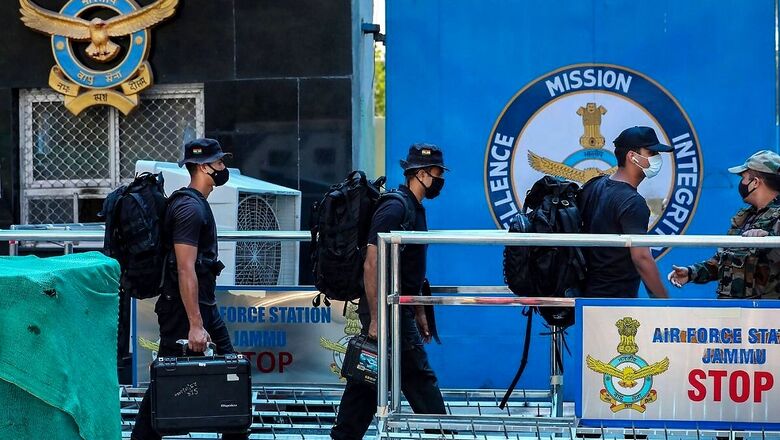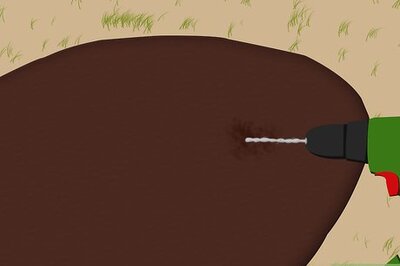
views
The National Investigation Agency (NIA) has taken over the probe into Sunday’s Jammu airport attack triggered by drones in which two people were injured, after an order by the Ministry of Home Affairs.
Early Sunday, two bombs were dropped at the IAF base, injuring two Indian Air Force personnel. The explosions took place at around 1.40 am within six minutes of each other.
The first blast ripped through the roof of a single-storey building at the high security technical area of the airport manned by the IAF in Satwari area on the outskirts of the city. The second one was on the ground, officials said.
Sources told CNN-News18 that the JeM might have been behind the attack, adding that the organisation might also have received support from another entity as the attack “could not happen without the active involvement of the Pakistani Army, or ISI”.
It is also suspected that RDX was used in the blasts, another source said. Samples have been sent for further lab tests, and about 1.5 kg explosive was used in each of the improvised explosive devices (IED), they added.
Even while officials were investigating the drone attack, another major strike was averted when a person, suspected to be affiliated to another Pakistan-based terror outfit, Lashker-e-Taiba, was arrested along with an IED weighing around 6 kg, said Jammu and Kashmir DGP Dilbag Singh.
Police have registered an FIR under the Unlawful Activities (Prevention) Act. Relevant sections of the Explosive Substances Act, and the Indian Penal Code (IPC) have also been added to the FIR filed at Satwari police station on the application of a junior warrant officer of the IAF, officials said.
An official said the FIR was registered under UAPA sections 13/16/18/23 of the (unlawful activities/terrorist act/conspiracy/enhanced penalties), and IPC section 120-B (criminal conspiracy). Sections 3 and 4 of the Explosive Substances Act (causing explosion likely to endanger life or property/attempt to cause explosion, or for making or keeping explosive with intent to endanger life or property) have been included.
Sources from the NIA told CNN-News18 that the initial investigation into the blasts has suggested that the drones came from across the border.
It was not immediately clear from where the drones had taken off and investigations were on to ascertain their flight path, officials said.
Investigators scanned the CCTV footage, including from cameras installed on the boundary walls of the airport, in an effort to determine from where the drones came. However, all the CCTV cameras focused on the roadside, officials said.
One to two kg IED was dropped from the drone/quadcopter. As no meaningful debris was found after the attack, the drone may have likely returned to the handler.
Drones cannot be detected by radars deployed at border areas to monitor enemy activity, officials said, suggesting that a different radar system that can detect drones as small as a bird be installed.
It is not yet clear if the drone was controlled through a handler using radio-frequency or was GPS-programmed to drop the payload at a given coordinate. The drone may have come from Pakistan – 14 km away – or from a quiet or abandoned area nearby.
Some guards said they heard a whirring engine noise, but no one saw the drone. Aerial distance from the Jammu airport to the international border is 14 km.
Read all the Latest News, Breaking News and Coronavirus News here.



















Comments
0 comment